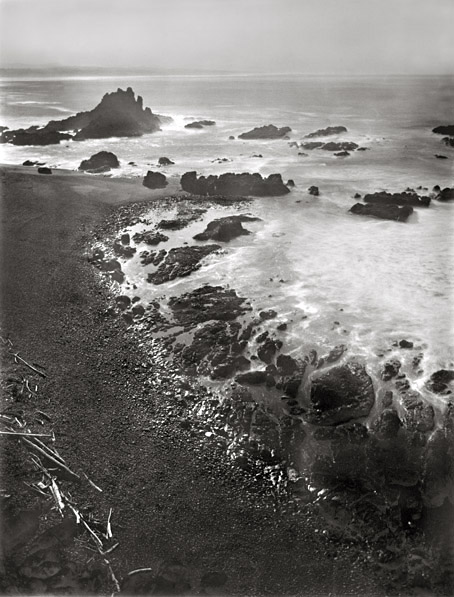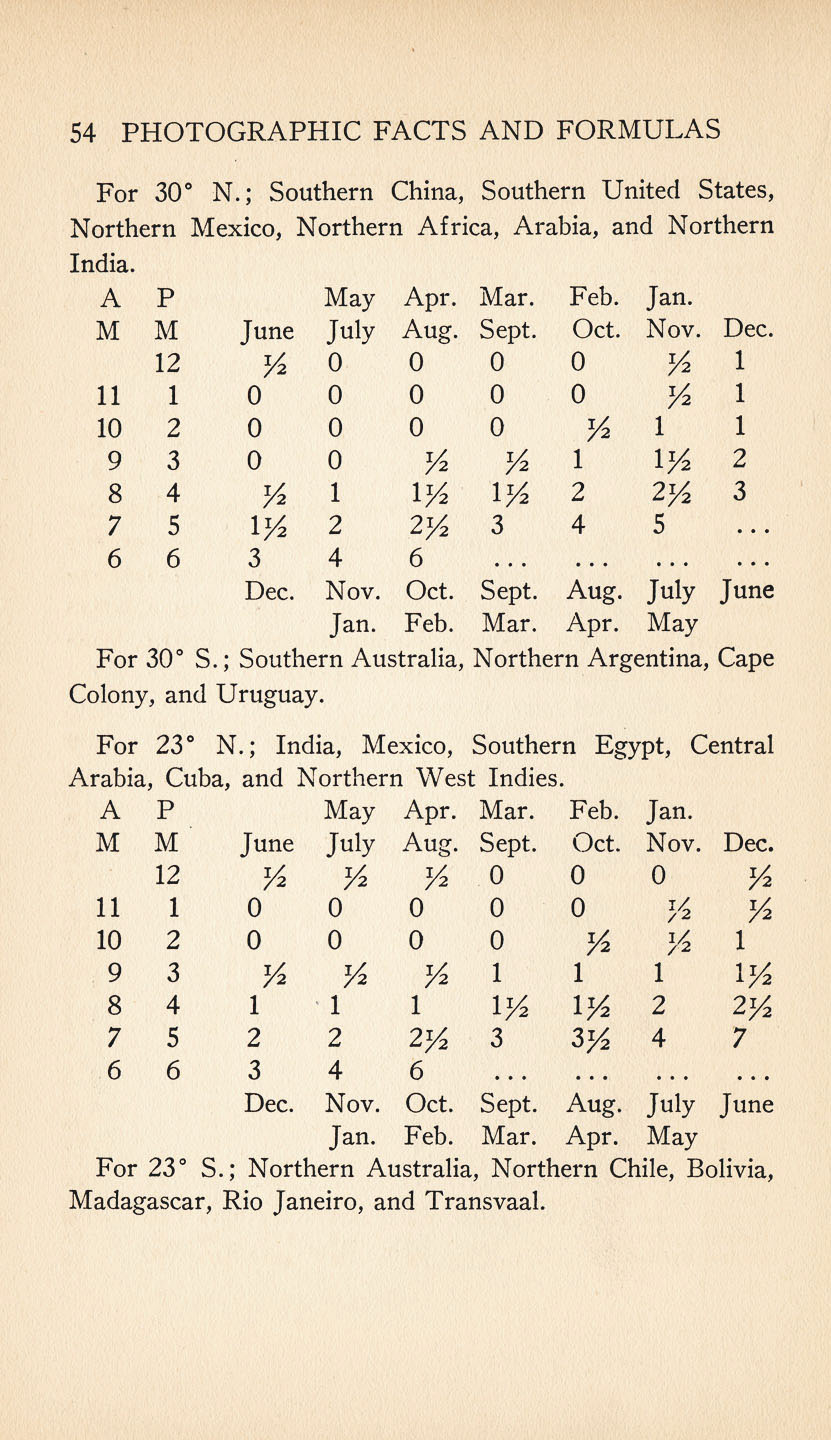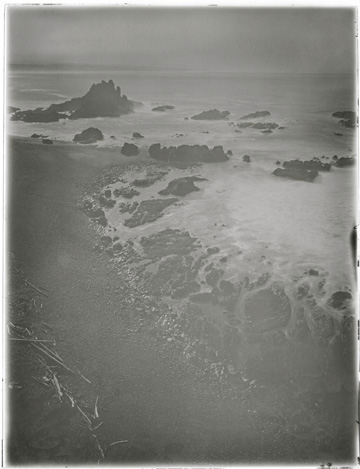
Whole Plate (6.5" x 8.5")
Dry Plate PhotographyExposure Fine-tuning and Troubleshooting |
 |
| 'Yaquina Head' |
|
TLF #1 Negative Emulsion Exposed to Positive Whole Plate (6.5" x 8.5") |
|
|
From Photographic Facts and Formulas
|
|||||||||

|

|

|

|

|

|

|

|

|

|
|
Avoiding the 'Spurious Precision'
Trap
|
|
|
It is misleading in the extreme to assign a firm ISO number to an old colorblind or orthochromatic emulsion. As I have addressed in previous sections, the old emulsions respond differently than the modern miracles we've grown up with. Any emulsion produced without a gamut of panchromatic sensitizers and industrial cooking controls will exhibit a range of 'speeds' — determined by the temperature of the light, the color and reflectance of the subject and the inevitable variability of each handmade batch, and the developer used. The old emulsions are best described qualitatively and with an assumed '~' sign. For better — and for worse — modern film emulsions have a lot of leeway for exposure and development. The bright side of this is obvious: it’s pretty hard to make an exposure/development mistake serious enough to ruin an image. The disadvantage is the loss of control previous generations of photographers took for granted. The following sets of images cover three overlapping areas of artistic control/potential pitfalls (two sides of the same coin) — exposure, development and filter factors. |
|
|
|||
| Pentax K20 Digital Color File, Color File Desaturated, Color File Desaturated and Inverted | |||
|
Determining 'Speed'.
|
|
|
The histogram on a digital camera is the best way I know to understand the old emulsions. Unless you are deliberately choosing otherwise, you are aiming for a smooth, balanced bell curve that doesn't compress or clip either the shadows or the highlights. Visualize a histogram when you look at the bottom row of the ColorChecker chart. A nice 'curve' in our case is six, easily distinguishable density blocks. The six plates below illustrate a number of overlapping issues that influence the exposure curve of a negative. |
|
|
All of the plates are from the same batch of TLF #1 emulsion, exposed on the
same afternoon in early May, at sea level on the central Oregon Coast
(latitude 44° N). Two different modern lenses and two different filters
were used. The bench was in full light, facing south, on a bright
overcast day. The plates were all processed in the same developer
(Defender55Dwr, 1:1). All of these facts are integral to determining the 'speed' of a plate. Top left: #8 yellow filter, underexposed, overdeveloped. Top right: #8 yellow filter, good exposure and development. Middle left: No filter, just a little overexposed. Middle right: UV filter, overexposed. Bottom left: UV filter, +overexposed. Bottom right: No filter, ++overexposed. |
|
Curve Control
|
|
|
The six plates go from one exposure extreme to the other. The first plate is very much underexposed and the last plate is very much overexposed. There is quite a bit to learn here. All the plates were photographed on a light table and output with no manipulation beyond inverting and cropping. |
|
|
|
|
|
|
|
|
|
|
|
|
|
|
A Positive Plate.
|
 |
 |
|
'Yaquina Head', the image at the top of this page, is solarization pushed to the limit. The entire plate (on the right) flipped uniformly. Although it is flat, the density is good. To produce the digital print, all I had to do was photograph the plate on a light table, crop the outer edges, apply a shallow 'S-curve' and a bit of selective 'burn' and 'dodge'. |
|
|
Filter Comparison: Y8 and UV.
|
|||
|
|||
|
From the left: NO filter, #8 Yellow, UV. Although there is highlight compression on the no-filter and UV-filter prints, it is easy to see that the color renditions are almost identical and very different from the plate exposed with a yellow filter. I need to get a batch of plates up into the mountains on a bright summer day and see if the UV filter has more influence under those circumstances. Also, it will be interesting to see how the addition of various sensitizing dyes influences the behavior of filters. Soon. |
|||
|
|
MORE TO COME: The addition of
sensitizers to the emulsion.
|
|
Replace This Text in js
Replace This Text in js
|
Copyright © The Light Farm |